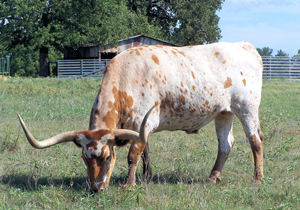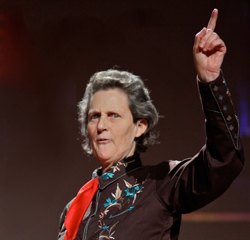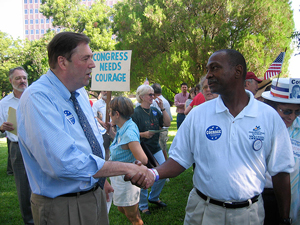
Source: Texas longhorn, Larry D. Moore, Wikimedia
You are already familiar with prepositional phrases such as “in the hallway,” “near my homeroom,” “during English class,” “inside my locker,” or “under the desk.” In the next sentence, the prepositional phrase “of Texas” pinpoints the state in which this iconic steer is revered.
The longhorn, one of the state animals of Texas, is named for horns that extend up to seven feet.
Clauses differ from phrases in that clauses contain a subject and verb. Unlike phrases, some clauses are independent and can stand on their own.

Source: 6 - Who, The - Ready Steady Who - UK - 1966 EP , Affendaddy, Flcikr
A relative clause, however, cannot stand on its own and is dependent upon the rest of the sentence. A relative pronoun is used to introduce a relative clause and is so named because it “relates” to another noun or pronoun. This noun or pronoun is called an antecedent. In this section, you will explore the kinship between relative pronouns and antecedents. Before you explore this relationship, though, you should know that a relative clause may also be called an adjective or adjectival clause and must
- contain a subject and verb,
- begin with a relative pronoun (who, whom, whose, that, or which), and
- function as an adjective.
See this handout by Robin L. Simmons to learn more about relative clauses.
The examples that follow use the relative pronoun “who” to add more information to each sentence.

Source: Temple Grandin at TED, Steve Jurvetson, Wikipedia Commons
Temple Grandin, who was diagnosed with autism at four, helps people understand how those with autism think.
Temple Grandin, who has written a number of books on animal behavior, consults with the livestock industry on humane slaughter practices.
Temple Grandin, who earned a Ph.D. in Animal Science from the University of Illinois, has designed cattle-handling facilities with curved chutes.
The relative pronoun who is the subject in each clause above. In the first sentence, was diagnosed is the verb of the clause. What are the verbs in the second and third clauses? Click on a box below to record your response.

Relative clauses come in two types: restrictive and nonrestrictive, or essential and nonessential. (We’ll use both sets of labels in this lesson.) You could categorize food the same way. Eating vegetables and fruits is essential if you want to be healthy. Eating chocolate and potato chips is OK every now and then, but these foods are nonessential to your health. As a result, you may have a closer relationship to healthy foods, and you won’t keep them at a distance.

Source: Dress Rehearsal of “The Butler Did It”, Michael@NW Lens, Flickr
The same is true of essential clauses. If a clause is essential to the sentence, it is not set off by commas—not distanced. If the clause is nonessential, however, it is set off by commas—or distanced—from the rest of the sentence, similar to how you might distance unhealthy foods from your diet.
In the last section of this lesson, you will focus on punctuating these two types of relative clauses. For now, it’s time to address two other relative pronouns, including the troublesome whom.
Chances are you don’t use whom in everyday conversation. You might even think that whom sounds pretentious. The writer of The New York Library Writer’s Guide to Style and Usage says that the associations between whom and pretension have been reinforced by “the well-mannered butler in countless British movies who answered the phone or the door and asked, ‘Whom shall I say is calling?’ Although he sounded very proper, he was wrong.”
The butler was wrong? You are likely relieved to know that you can default to who all the time in conversation. You’re not alone. Even some experts wonder if whom is worth preserving. Despite the debate, there’s still a time and place for this word in academic writing.
Watch this video and pay close attention as an editor at Merriam Webster’s Online helps us understand when to use who and whom.
Source: Who vs. Whom - Merriam-Webster Ask the Editor, MerriamWebsterOnline, YouTube
Did you figure out why the butler was wrong? Who—not whom—is the subject of the verb is calling. If you figured this out, good work. If not, listen to the explanation once again.
You may also be thankful to know that whose is much easier to grasp than whom. Whose is used for possession, with a nonessential relative clause, as in the following sentence:
The butler, whose haughtiness made us feel unwelcome, told us to wait in the entry.
Don’t confuse the relative pronoun whose with the contraction for “who is” as in “who’s on first” in Abbott and Costello’s comedic routine about the players on a baseball team. Also, remember the following guidelines when using who, whom, and whose:
- When referring to the subject of the sentence or clause, use who.
- When referring to the object of the sentence, clause, or object of the preposition, use whom.
- If you can’t remember when you use whom, just remember that “him” or “her” equals whom.
- If your sentence sounds stilted, like “Whom were you visiting?” consider using who.
- Use whose to show possession, as in “The cat, whose claws were clipped, can stay in my room.”
Now return to examples of relative clauses about the Lone Star State, a place where stuffy butlers and pretension have been outlawed.

Source: John Courage greets a New Orleans evacuee (survivor), clockwerks, Flickr
The politician, who endorsed the Texas motto of “Friendship,” shook everyone’s hand at the rally.
The politician, whom I saw shouting at an aide, told the crowd that he endorsed the Texas motto of “Friendship.”
In the first sentence, who is the subject of the clause. In the second sentence, whom is object of the verb saw. You can also reorder the words and substitute “him” for “whom” to be certain.
Whom did I see shouting? I saw him shouting.
For the next activity, select the correct relative pronoun from the pull-down menu in each sentence below.
